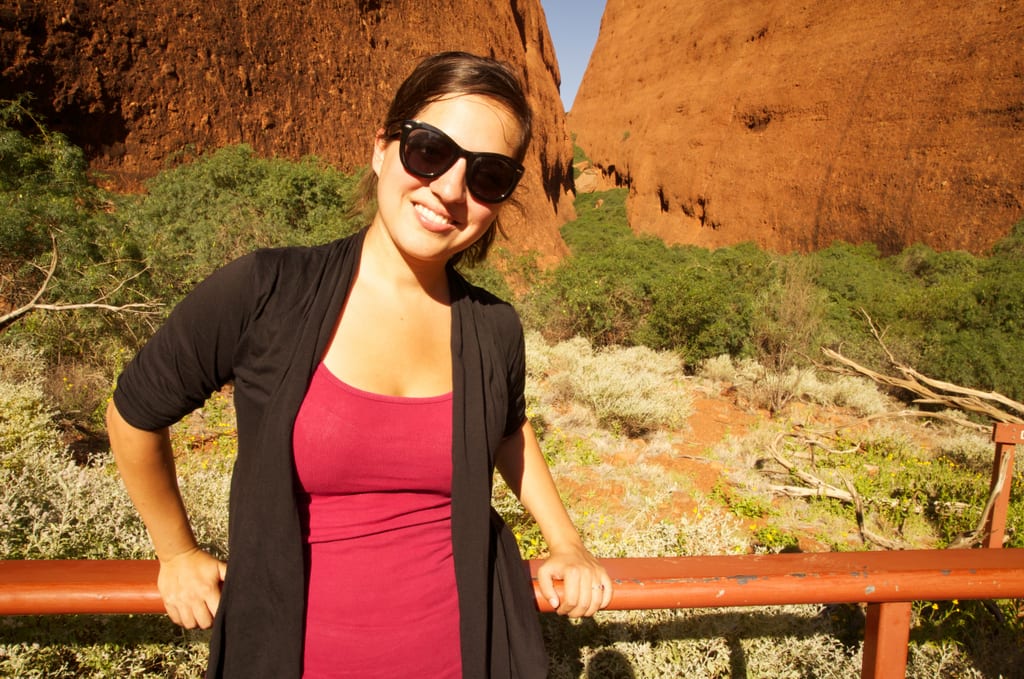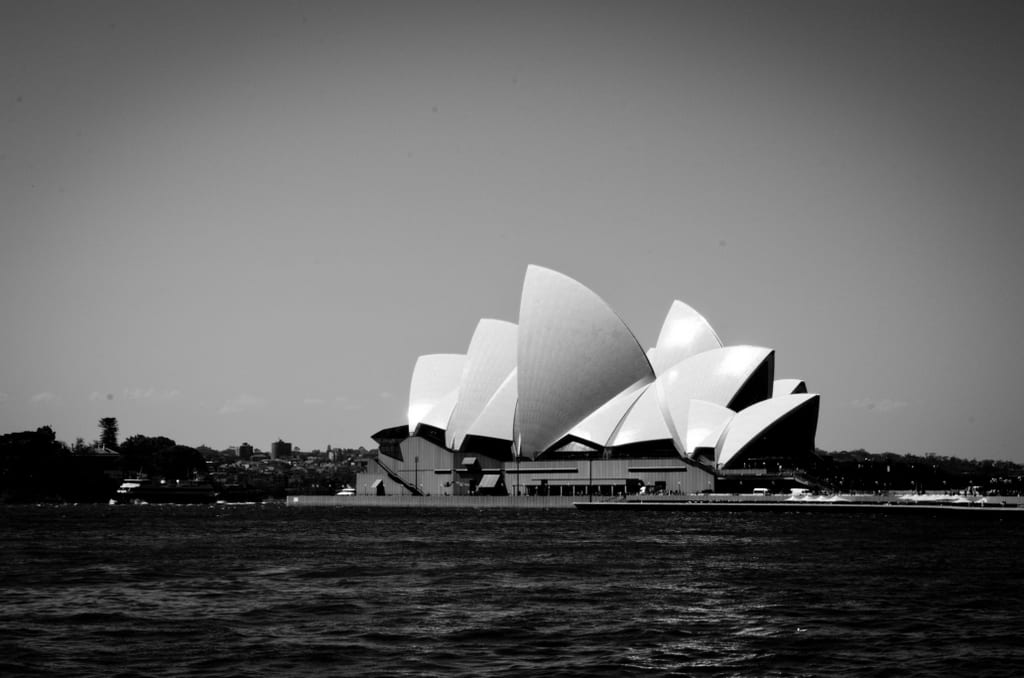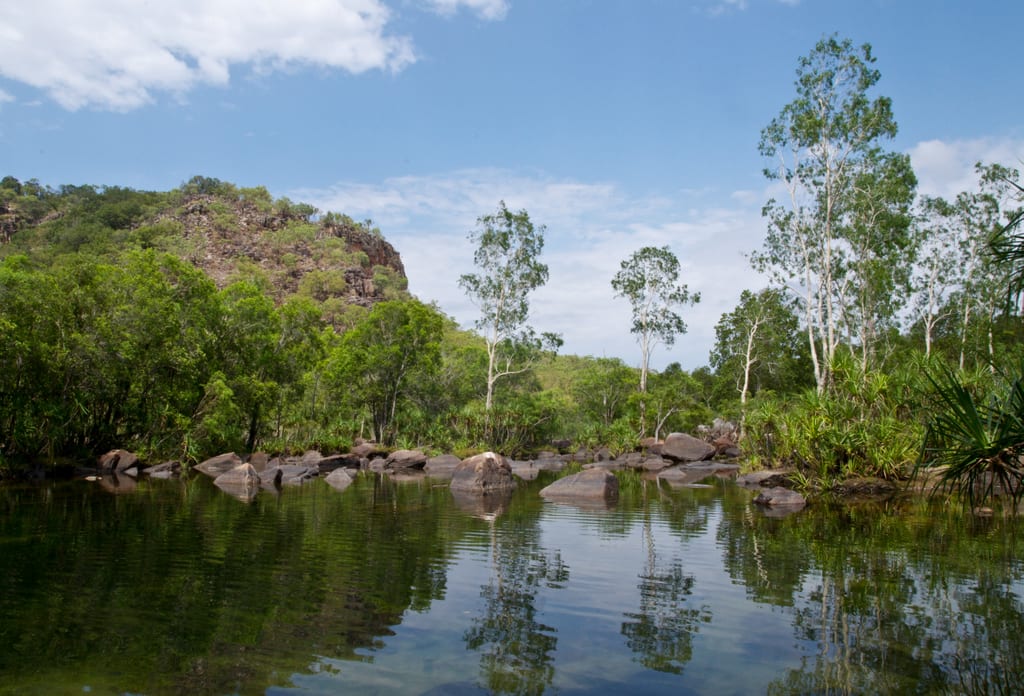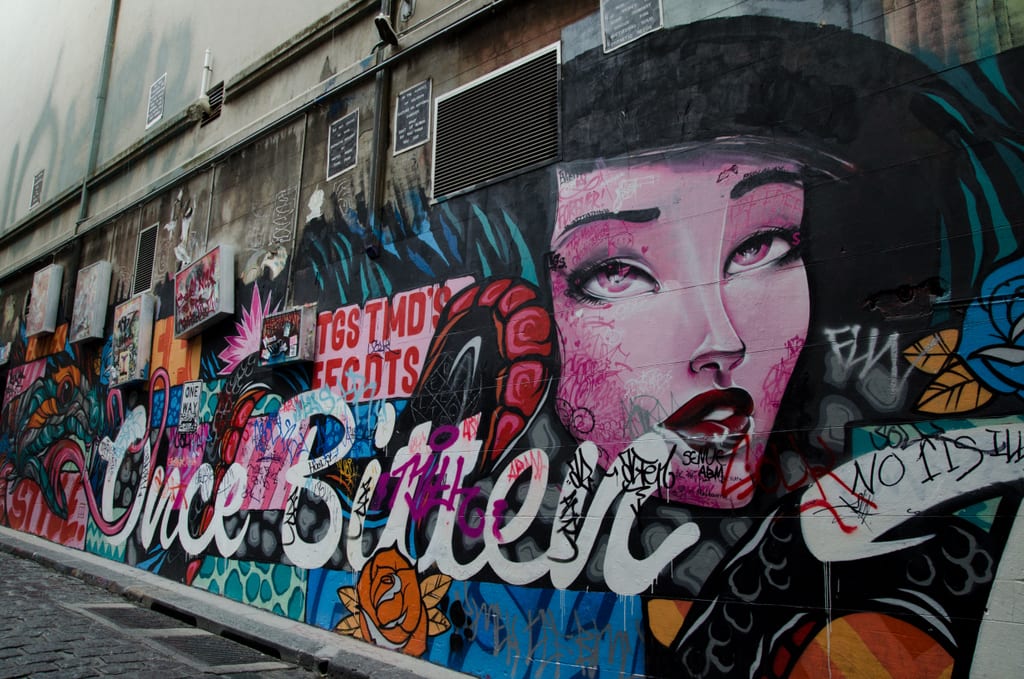Adventurous Kate contains affiliate links. If you make a purchase through these links, I will earn a commission at no extra cost to you. Thanks!
It’s one of the most expensive countries in the world. Is Australia worth the cost?
Over my three weeks Down Under, I choked at prices several times. The first time was at a little general store and cafe near Litchfield National Park in the Northern Territory when I wanted to buy a cup of coffee. Coffee was served in real mugs — no takeaway allowed — and a tiny mugful cost $4.90 AUD ($4.60 USD).
That was my first indication that Australia was even more expensive that I thought it would be — one of the most expensive places I’ve ever been. Yes: I found Australia to be more expensive than Japan, Stockholm, Iceland, London, Paris, New York, and everywhere else I’ve been except Switzerland.
While Australia has always been on the pricey side, in recent years, the currency value has climbed. In 2009, one Australian dollar was equal to $0.65 USD. For a while, it averaged around $0.75 USD. Today, one Australian dollar is equal to $0.92 USD. This is significantly lower than it was earlier this year.
To put this further in perspective, minimum wage in Australia is currently $16 AUD ($15 USD) for those over age 20. Even though the Australian dollar is close to equal to the US dollar, in contrast, the US federal minimum wage is $7.25 USD.
You’ve got a country that’s expensive to begin with, a soaring currency making things even more expensive for international visitors, and it’s expensive to fly there. A trip to Australia will cost you a lot of money.
My Personal Costs in Australia
Once arriving in Australia, you need to get into a different financial mindset. If you try to keep on the same budget that you’re used to in North America or Western Europe, you’ll be traveling at a much lower level than you’re used to (like hostel dorms rather than private rooms) out of necessity.
I was initially planning on visiting only Sydney and Melbourne, and possibly heading up the coast to see friends. I knew Australia would be pricey, and being on a tight budget for this year of travel, that was all I could afford. Staying with friends, which I did for a week in Melbourne and one night outside Sydney, saved me about $1000 USD overall and played a pivotal role in making Australia affordable for me.
The other pivotal role was that of Northern Territory Tourism, whose representatives I met in May. When they heard about my trip, they offered to host me in the NT on their dime in exchange for coverage and content, which allowed me to extend my trip to three full weeks.
Had I been planning a singular trip to Australia, I would have been able to save more money and travel to more places — but it would have to be a budget trip. (My version of budget travel means cheap private rooms with good wifi and paying more for better or shorter transport, while I keep most other expenses down and splurge on occasion.)
Here are some examples of what the costs were in September and October 2013:
Lodging: My Airbnb rental in Bronte, Sydney, cost $56 USD per night and was a room in the owner’s house. I stayed with friends in Melbourne, but when researching private rooms in hotels and hostels, I couldn’t find anything under $140 AUD ($128 USD) per night (a whopping $980 AUD ($898 USD) for a week!). The cheapest private doubles in Darwin started at around $75 AUD ($69 USD). The cheapest private doubles at Ayers Rock Resort by Uluru, in the Outback Pioneer, cost $198 AUD ($181 USD).
Food: In Sydney and Melbourne, I typically paid $15-20 AUD ($14-18 USD) for breakfast. My cheapest restaurant meal was a bowl of pho in a no-frills Vietnamese restaurant in Northcote, Melbourne, for $9 AUD ($8 USD). Dinner entrees in cheap-to-midrange restaurants usually ran $15-25 AUD ($14-23 USD). Grocery stores were a bit more expensive than the US. Coffee was cheap, though — often $3 AUD ($3 USD) for a fantastic flat white.
Internet: Australia has the worst internet of any country I’ve ever visited, including Cambodia, Laos, and South Africa. It’s slow, expensive, and often tough to find. Internet at my lodging in Darwin ran me $4 AUD ($4 USD) for 24 hours and barely worked. Some cafes and McDonald’s have free wifi, but the quality is often terrible, especially in rural areas.
Phone: I was able to get a Telstra mobile plan with texting, calling, and 400 mb data for $30 AUD ($27 USD). I later paid $50 AUD ($46 USD) to increase the data to 2 GB. I wouldn’t have been able to provide a fraction of the social media coverage that I did without this plan. Coverage was great in Sydney, Melbourne, and Darwin; it worked in the main town of Kakadu and Ayers Rock Resort but not in the national parks.
Activities: This is where you’ll pay the most money. The Sydney Harbour BridgeClimb currently costs $198-308 AUD ($181-282 USD); the Uluru Cycles motorcycle ride costs $170 AUD ($156 USD); the Uluru Camels ride costs $100 AUD ($92 USD), not including the $185 AUD ($170 USD) Sounds of Silence dinner; the three-day camping tour in Kakadu starts at $705 USD.
Why Australia Is Worth It
There are two things I want you to keep in mind: the first is that value is a personal thing and varies from traveler to traveler. While I found Australia to be pretty good value for me, it would be much less value for a shoestringer who doesn’t love the great outdoors.
Secondly, “best value” is not a euphemism for “cheapest.” If that were the case, Cambodia would be my top value destination, and I think we all know that’s not going to happen. Value is determined by what you get for the price, and it’s often intangible.
I found Australia to be a wonderful country that I enjoyed immensely, and I found it to have high value. The reasons:
Natural beauty. From the bright red sands of the Red Centre to the silky-smooth beaches of Sydney and the craggy, Jurassic Park-esque landscape of the Top End, Australia will bring you to its knees. I know I only saw a tiny piece of Australia, but places like Whitehaven Beach in Queensland, the Twelve Apostles in Victoria, and Wineglass Bay in Tasmania look heart-stoppingly beautiful.
Infrastructure. Australia is built for tourism, and no matter what kind of trip you want to have, you’ll be able to execute it brilliantly. The language is English and there are a variety of ways to travel, from simple camping to five-star resorts (or “six stars” if you stay where Oprah stayed at Uluru). With the exception of the awful internet, Australia has everything you could want as a tourist. I also felt very safe in Australia.
Diversity. On my trip, I got to see the nearly untouched, prehistoric-looking gorges of Kakadu National Park, then sip flat whites in hip Melbourne neighborhoods a week later. Australia is similar to the United States in that it has so much natural and geographic diversity within its borders. That was my favorite part — how a single country could offer both such wild national parks in addition to cities that regularly get ranked among the world’s best places to live.
People. While Australia was once colonized by convicts, today you can’t deny that Australians are some of the most gregarious, talkative, fun, spirited, and party-loving people you’ll ever meet. Come to Australia and you’ll leave with many new friends.
Uniqueness. While Sydney to me was a mostly nondescript city with gorgeous beaches, and Melbourne was a nicer, cleaner, less tragic, much more expensive version of Berlin, the Northern Territory was the truly unique part of Australia, home to crocs lurking in the rivers, the world’s oldest rock art, an enormous red rock commanding the desert. Australia’s natural environment is what sets it apart from the rest of the world, which is why I recommend you get out of the cities. Plus, where else will you see kangaroos and koalas in the wild?
Dream factor. Australia is a dream destination for many people, often a dream since childhood. I think there’s a LOT of value in standing in front of the Sydney Opera House, or seeing your first koala in the wild, as you grin to yourself, thinking, “I’m finally here!”
How to Save Money in Australia
Get into points and miles. Airfare to Australia is obviously quite expensive for most people. One way you can subsidize the cost is getting into points and miles. My recommendation? Read The Points Guy. It’s the single most comprehensive source on the web (not to mention the fastest in reporting new deals), and it’s all free.
I used my British Airways Avios, which are best used for flying short-haul, to fly from Sydney to Melbourne on Qantas for just 4,500 Avios and $13 USD. Much better than $60-90 AUD ($55-82 USD) for a 12-hour bus ride or $150+ USD for a flight.
Rent apartments. If having a private (re: non-dorm) room is a priority for you, I recommend staying in Airbnb rentals or other apartments. The prices are much lower than hotels and rentals often include decent internet and laundry for free, which will cut down your costs further.
Get a mobile phone plan and use it to tether on your computer. Unless you’re doing a lot of heavy uploading, which I do as a blogger, this will be your best option for internet. I found my aforementioned Telstra phone plan to have good coverage for a decent price.
Come live here for awhile! The ultimate option. If you’re eligible for the working holiday visa, come to Australia, spend a few months earning a high Australian salary, and use that to finance your travels around Australia.
Should You Go to Australia?
Of COURSE you should! Australia is a dream destination for so many people, and you should absolutely go after your dream!
But I will say this — if you’re planning a long-term budget trip around the world, I wouldn’t recommend spending extended time in Australia.
That doesn’t mean you shouldn’t go to Australia. Just don’t go for months on end. The money you’d spend on a single month of backpacking Australia could pay for three or four months of backpacking Southeast Asia. If visiting Australia is a priority for you on your long-term trip, and you don’t have buckets of cash, I recommend you keep your visit on the shorter side but filled with the places you’ve dreamed of visiting. If you’ve got the cash, though, then by all means, stay as long as you can!
Australia, in my opinion, is best done as a special trip when you have more money to spend. This doesn’t mean you have to splash out in luxury — quite the opposite. If you save up for awhile, you can stay in a nice apartment rental in a great location instead of staying in a dorm on the outskirts of town because you have no other choice. You can eat in restaurants instead of hitting up the grocery store for every meal. You can do activities like the Sydney BridgeClimb instead of passing them up for cheaper fare.
You can do Australia on a shoestring if you’d like to. I know people who have done it and who have enjoyed it. To me, though, it’s so much better if you have a bit more money to spend.
Have you been to Australia? Do you think it’s worth it?
Many thanks to Northern Territory Tourism for their generous support of the SOTM Tour and for hosting us in the Northern Territory. Many thanks also to the Sydney BridgeClimb for offering me a complimentary climb. Everything else in Australia was at our own expense. All opinions, as always, are my own.




